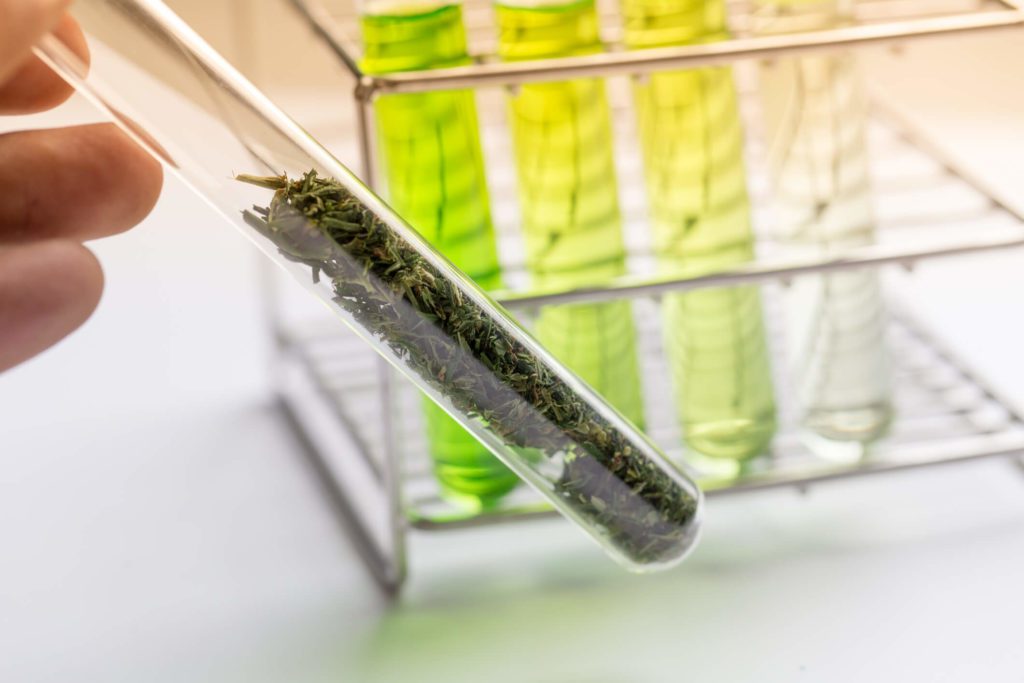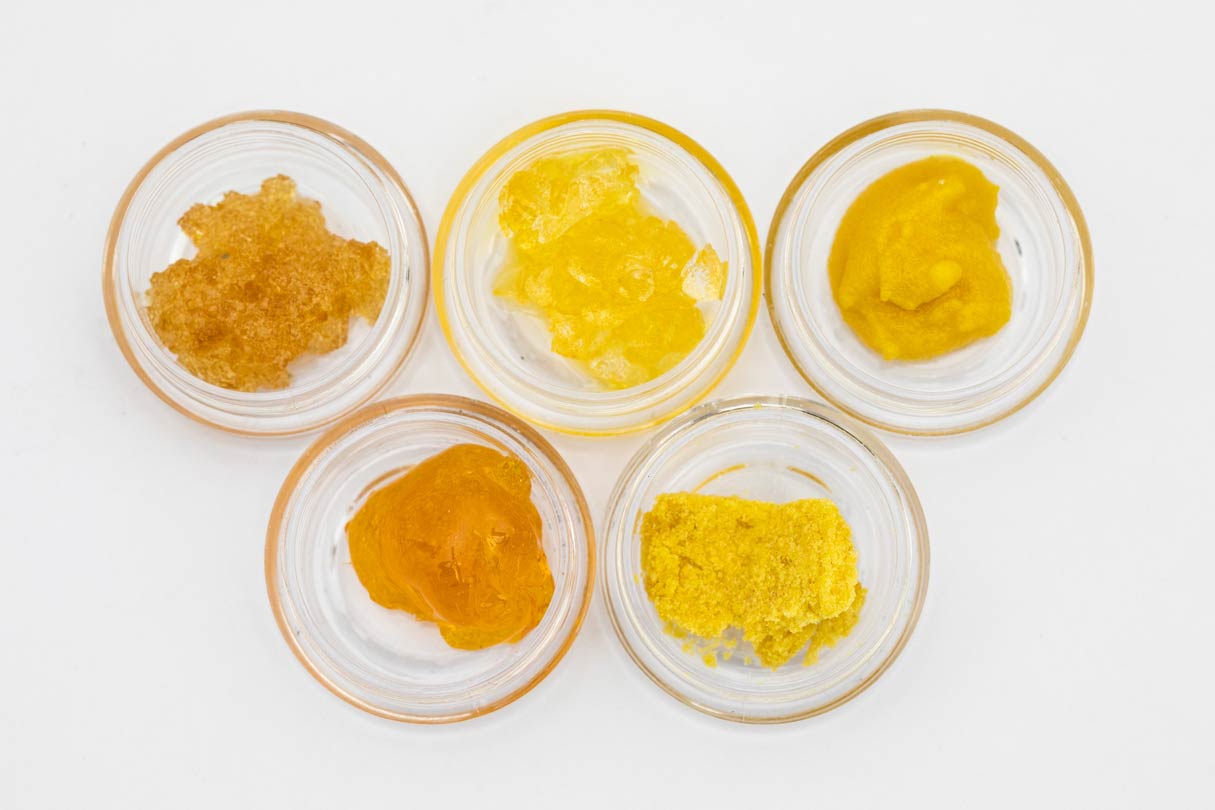
How do you describe the flavor profile of your favorite fruit? If it’s mango, words like ‘bright’ or ‘sweet’ might come to mind. The scent comes in to play, too – some people prefer the ‘musky’ scent of papayas over a ‘floral’ mango. The same classifications apply to cannabis; Flavor and scent profiles have significant influence over consumer choices. And these profiles are determined by terpenes.
The energizing effect of certain flowers? The calming effects of others? Terpenes are one of the compounds responsible. Terpenes are often what distinguishes a favorite cannabis product from the rest. That effect is determined by how those terpenes were cultivated in the cannabis plant and extracted for its final product.
This explainer introduces terpenes, their presence in cannabis, and preferred terpene extraction methods.
What Are Terpenes?
Terpenes are organic compounds that exist in many plants, including cannabis, and even sometimes in animals. Terpenes give a plant its distinct aroma and flavor profiles. When a cannabis flower gives off a lavender-like scent, that’s because of the terpene Linalool, which also exists in the lavender plant.
Hundreds of terpenes have been identified in cannabis. Each one has unique properties. Individual terpenes can be isolated for use in products like essential oils. They are also extracted alongside co-existing chemical compounds – like THC – to deliver a plant’s essence in full. Regardless of the end product, some sort of extraction process is required.
Understanding Terpenes in Biochemical Terms
Terpenes are organic hydrocarbon compounds built of isoprene units – five carbon atoms and eight hydrogen atoms, or C5H8. The number of isoprene units creates different terpenes. Monoterpenes, diterpenes, and sesquiterpenes are the most commonly used in the cannabis industry.
Why Do Plants Have Terpenes?
The aromatic effects of terpenes are a brilliant self-defense mechanism for plants. Generally, they exist as natural oils in the plant, which deter plant-eating animals and may even attract another animal to attack plant-eaters.
They also attract pollinators, which helps propagation. When humans fall in love with a scent, like Linalool in lavender, we decide to cultivate and celebrate it… and this is a big win for the plant in its goal to reproduce and thrive.
Why Do Humans Love Terpenes?
The pleasurable flavor or smell can be enough to attract you to a particular plant terpene. But terpenes also have subtle but distinct effects on the body and mind that can soothe and possibly even heal. This is the basis of practices like aromatherapy. Clinical studies are emerging to support these ancient practices.
Mental effects Have you ever smelled a fresh orange peel and felt your brain brighten up? That is the effect of terpenes such as Valencene or Limonene, known for energetic and stress-relieving effects. They’re also present in cannabis. Pinene terpenes are known to help the mind actively focus. Linalool is sometimes used to treat depression.
Physical effects Specific terpenes are credited with wellness properties – muscle relief and immunity stimulation among them. Some are employed in more intensive medical issues, including respiratory, muscular, and even neurological ailments.
Terpene Extraction Across Centuries
The people of Ancient Egypt, India, and Persia extracted terpenes for essential oils. Oils were traded widely across empires. And humans have been creating cannabis extractions for centuries as well – from ancient Chinese hemp seed oil to holy Indian bhang to the edibles and hash of today.
Modern industrial extraction allows humans to isolate desired properties – usually CBD or THC – from cannabis plants at unprecedented efficiency, scale, and quality. There are numerous methods, each with its own virtues in terms of ease, safety, and yield. But terpenes are sensitive to heat and pressure, and not all extraction methods extract terpenes well.
Terpenes, Cannabinoids, and “the Entourage Effect”
The mingling of terpenes and cannabinoids give each cannabis strain its specific effect. While some terpenes are known to trigger similar effects as cannabis – relaxation, mood enhancement, etc. – they do so through different yet often complementary receptors. This is known as “The Entourage Effect.”
Linalool is known for sedative properties, so cannabis flowers like with high Myrcene levels are known for a sleepy buzz. On the other hand, a cannabis strain like Jack Herer, with a significant pinene level, is known for an energetic experience.
High Terpene Full-Spectrum Extraction (HTFSE) aka “the Sauce”
A combination of concentrated THCa and terpenes, “The Sauce” is the current industry standard-bearer for rich, natural flavor in cannabis extracts. It can also fetch a pretty high price point, which makes it appealing to extraction businesses.
Extracted at a low boiling point to preserve the temperature-sensitive terpenes, The Sauce delivers a purified flavor, aroma, and THCa profile. And the cannabinoid and terpene ratio remains as close as possible to the original plant’s.
High-Terpene Extraction Methods
The leading extraction methods are chosen by different producers for different reasons – budget, complexity, safety, scale. If your primary concern is yield and terpene preservation, some extraction methods stand out over others.
Ethanol Extraction
Ethanol extraction is considered safe, reliable, and efficient. The plant is washed with ethanol at a low temperature with low pressure, which leads to a modest terpene content.
It can be hard to adjust or fine-tune. But the major drawback with ethanol solvent is its attachment to water-soluble molecules – specifically, chlorophyll and some waxes that create a bitter flavor. Subsequent purification post extraction can remove the flavor, but it also risks diminishing the cannabinoid and terpene content in the process.
Carbon Dioxide (CO2) Extraction
CO2 is applied in high pressure at low temperature, which renders the gas to a liquid for extraction. The big perk of the CO2 method is the ability to extract terpenes only by tuning the solvent solubility. CO2 is popular amongst the food industry – it’s used to make vanilla extract and numerous cooking oils.
The equipment for this method can be pricey and complicated however. Its slower extraction period is manageable enough, but the big concern with CO2 is lower cannabinoid yield. Similarly, there is debate as to how effective it is with overall terpene yield. Many CO2 extraction operations wind up adding terpenes from other plants at the end of the extraction process.
Hydrocarbon Extraction
Butane and propane are the most common hydrocarbon extractor solutions. Its low-temperature, low-pressure approach yields high cannabinoid levels and full-spectrum terpenes without any bitter compounds like chlorophyll.
Another trusted extractor in the food industry, hydrocarbon, has become a favorite among the cannabis industry because of its fast extraction process and consistent, quality yield and, of course, high terpene preservation and yield.
Best High Terpene Extraction Method: Hydrocarbon Extraction!
Ideally, every extraction process begins with the highest-quality plants you can find. Hydrocarbon extraction is the most effective way to honor the original features of the plant.
The Science Behind Why Hydrocarbon Works Best
Butane is a non-polar, Class 2 flammable liquefied gas. It is Generally Recognized As Safe (GRAS) by the US Food and Drug Administration (FDA). Its boiling point is -0.5 C (31.1 F), which makes it easy to eliminate at room temperature.
A compound’s polarity (i.e., electron balance) is significant to extraction because polar solvents attract polar compounds, and non-polar solvents attract non-polar compounds.
Terpenes and cannabinoids are basically oils. Oil is non-polar. Water is polar. So a non-polar solvent like butane will attract terpenes and cannabinoids (as well as lipids and waxes) without attracting water-soluble compounds chlorophyll. This will make for a more refined flavor and aroma in final products.
Are You Interested in Extracting Terpenes?
Explore Precision’s Hydrocarbon Extraction Equipment or talk to a Precision extraction expert to learn what solution is optimal for your operational goals.








